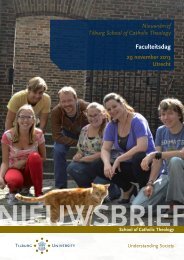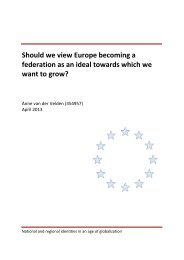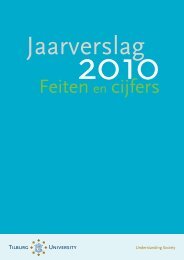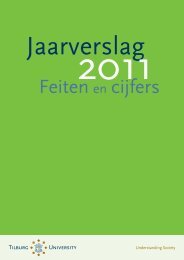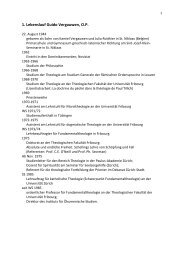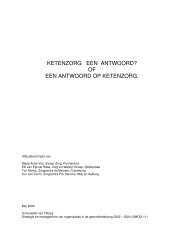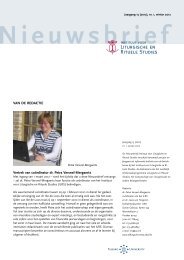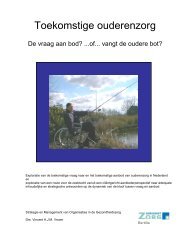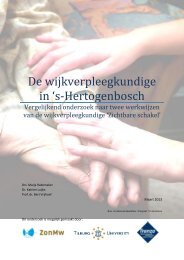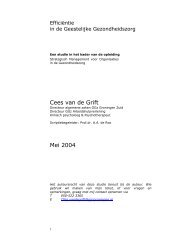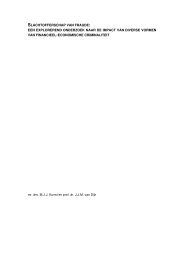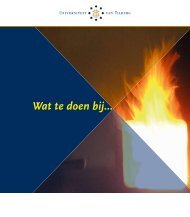Here - Tilburg University
Here - Tilburg University
Here - Tilburg University
Create successful ePaper yourself
Turn your PDF publications into a flip-book with our unique Google optimized e-Paper software.
Presenter<br />
Engel, Uwe; Dept. of Social Sciences, <strong>University</strong> of Bremen<br />
Authors<br />
Uwe Engel; Simone Bartsch and Helen Vehre; <strong>University</strong> of Bremen<br />
Title<br />
Who joins a probability based access panel?<br />
Abstract<br />
As part of the German Priority Programme on Survey Methodology<br />
(www.survey-methodology.de), large random telephone samples for the adult<br />
population of Germany were drawn to build up an access panel for the three<br />
survey modes fixed-line, mobile-phone, and online-interviewing. 14,200 realized<br />
interviews yielded a net panel size of 6,600 people.<br />
The study design involves recruitment interviews of 20 minutes of length<br />
on average. The questionnaire programme focuses on variables expected to be<br />
relevant for explaining survey participation in one way or another (e.g., survey<br />
items related to social exchange and inte-gration, attitudes toward survey<br />
research, prior survey experience, personality traits, com-munication habit).<br />
A key feature of the study consists in an experimental design that, for<br />
refusal conversion attempts, combines interviewer tailoring efforts with the offer<br />
of ‘core interviews’ (of about half the full interview length) and ‘exit interviews’<br />
(consisting of just two questions on prior survey experience). In this way a<br />
limited amount of survey data is obtained for respondents who were otherwise<br />
non-respondents. In addition to the survey data from full-interview participants,<br />
we now have for two subsets of the whole variable list corresponding informa-<br />
tion also from core-interview and exit-interview participants. Hence it is possible<br />
to include the respective survey variables (along with paradata) in a model to<br />
predict the probability of obtaining a full recruitment interview.<br />
A further key feature of the study consists in a heavy use of paradata and<br />
metadata to predict response propensities. The available paradata includes<br />
information about the se-quences of events that occurred during the process of<br />
repeated contact attempts. We iden-tified all such sequences and coded them<br />
into a typology of 22 contact courses. Also availa-ble is the number of contact




